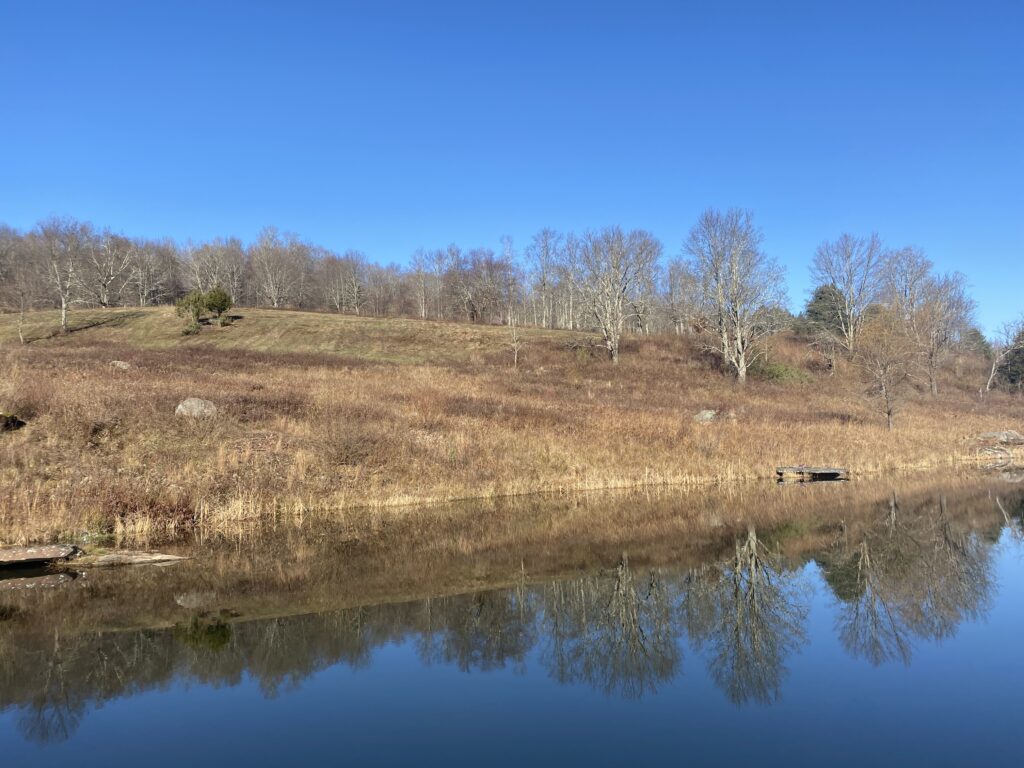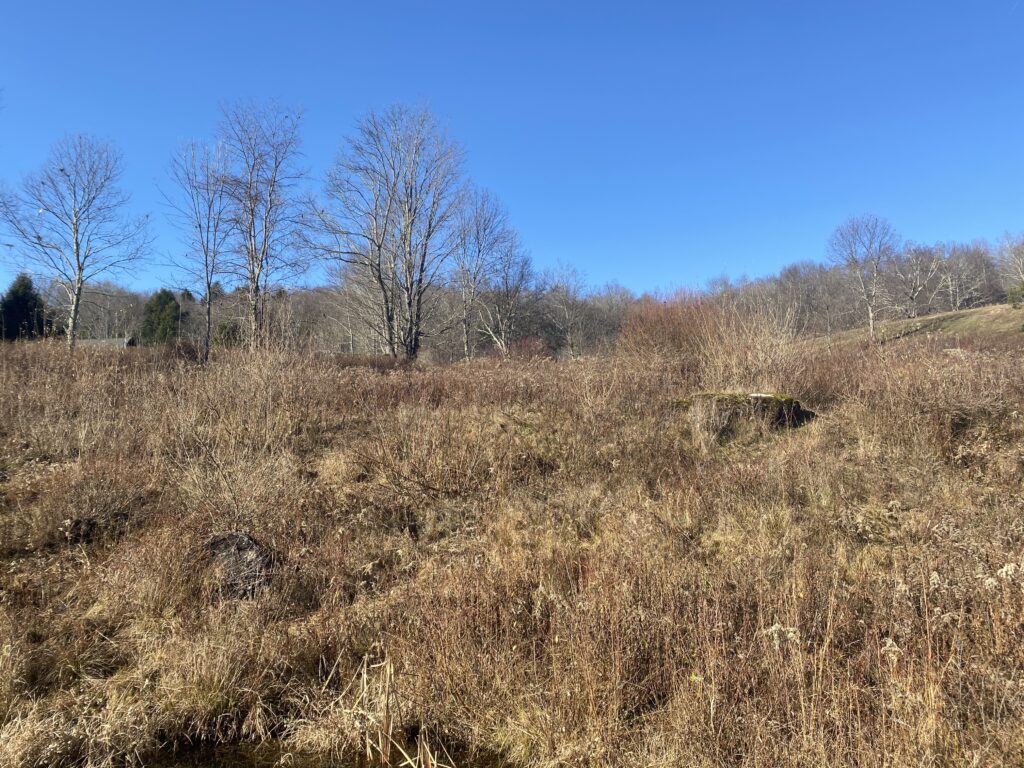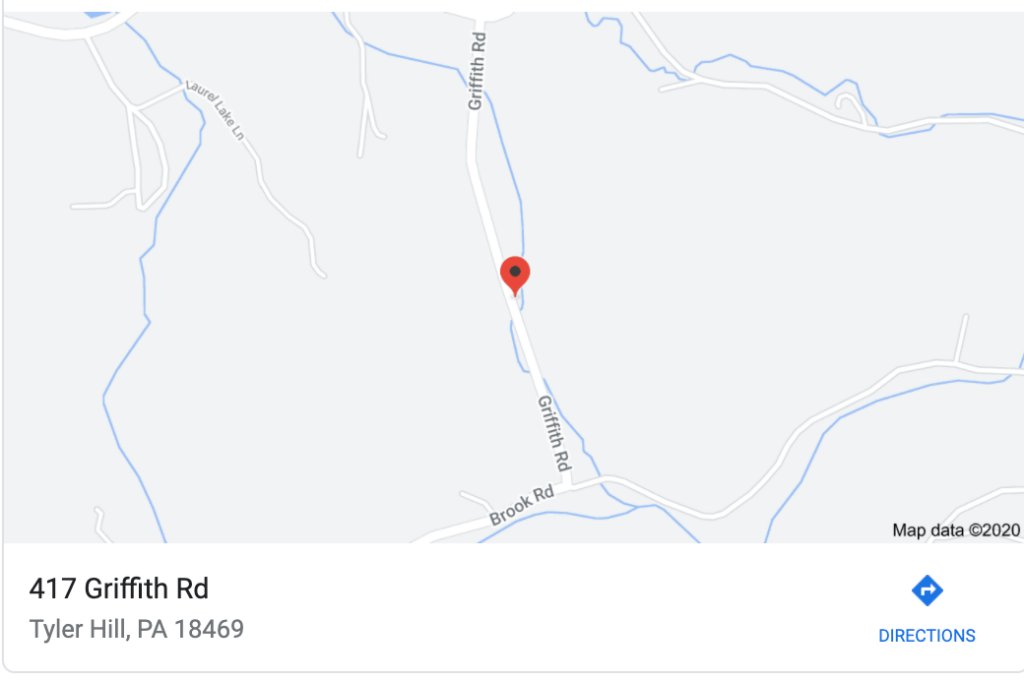This morning I stepped outside into my back yard and to my surprise, the early morning dew had frosted over on the ground. I walked a couple hundred feet to my pond. I listened to the water from my hill slowly trickle into the pond. The hill is mostly forested with new growth shrubs. I think of our class discussions about the big transition in New England regions (1600-1800) that went from almost completely forested landscape (pre-settlement) to pastoral landscapes with patchwork of farmsteads and villages. Along with Vermont, Pennsylvania was also largely deforested. The major difference between Centennial Woods and this spot is that Centennial is filled with older growth and a larger overstory. Whereas parts of my hill is cut down and groomed every year. The focal point of my Pennsylvania phenology site is the pond. When compared to Centennial Brook, both are very important functions to the ecology of their places. They provide better soil and habitats for wildlife. The difference between these two water sources is that the brook is flowing water and the pond is still. This means that although they are water sources, they both house different wildlife and provide different natural systems. My challenge for all of you is walk outside your stuffy homes and look for the pieces, patterns and processes that surround you and the natural world. Happy exploring!



